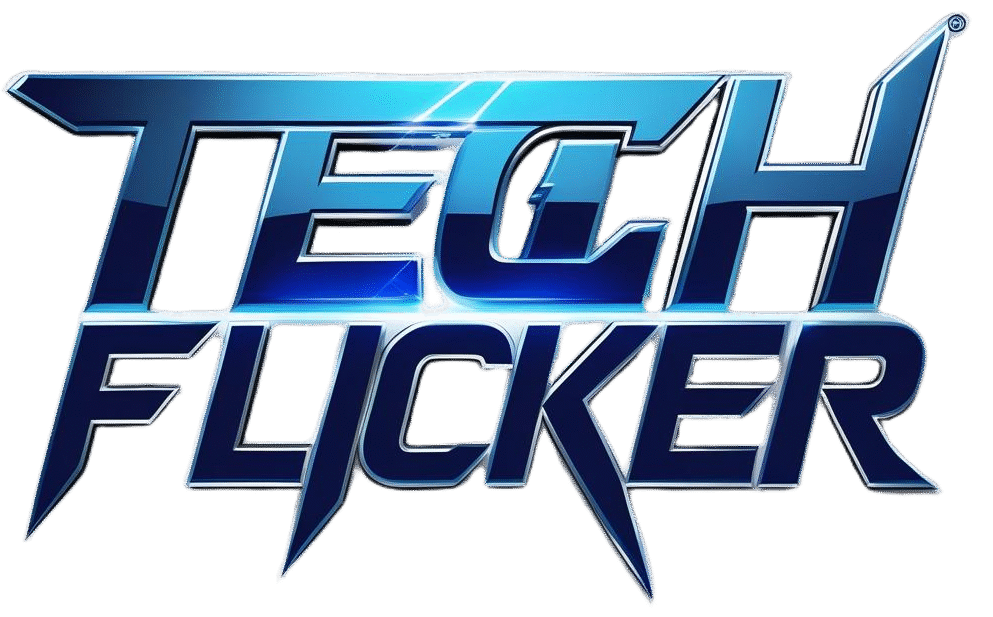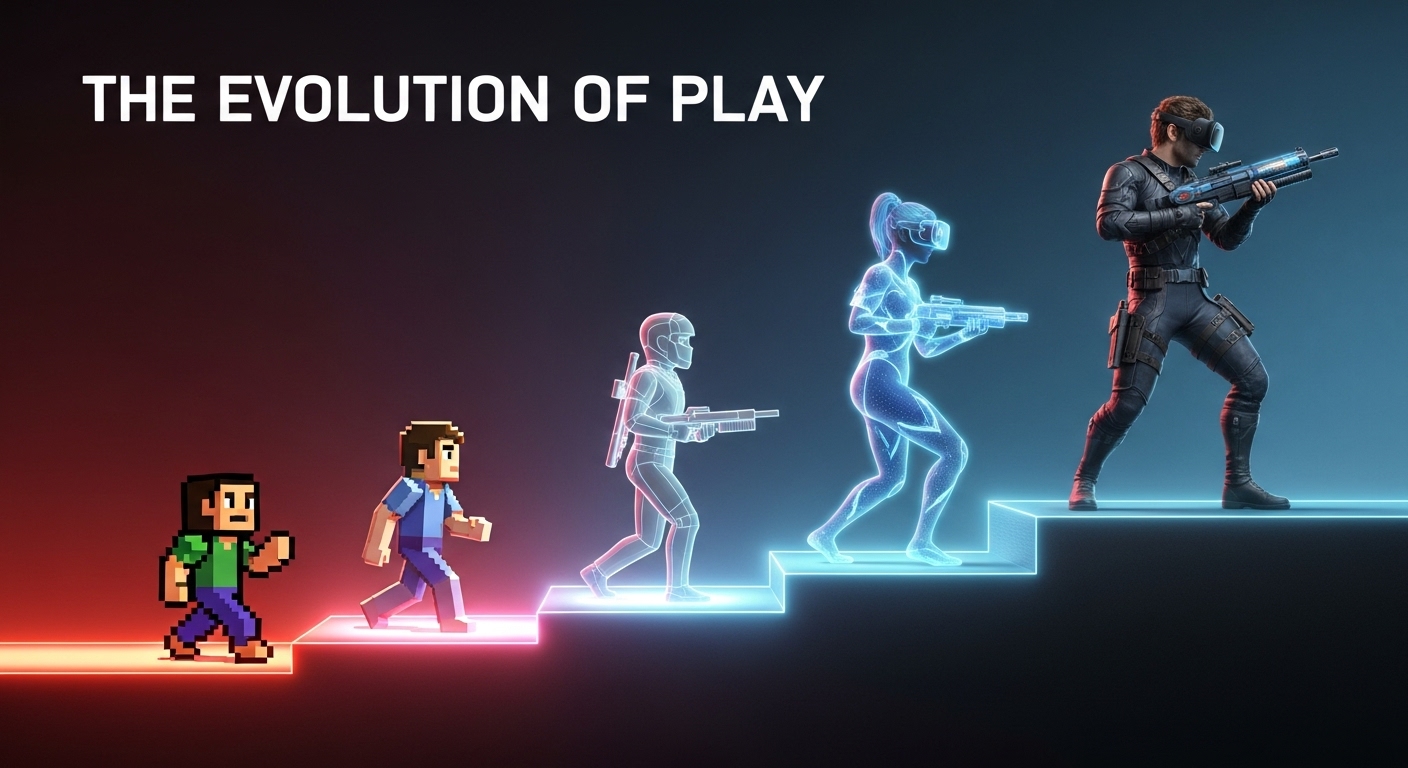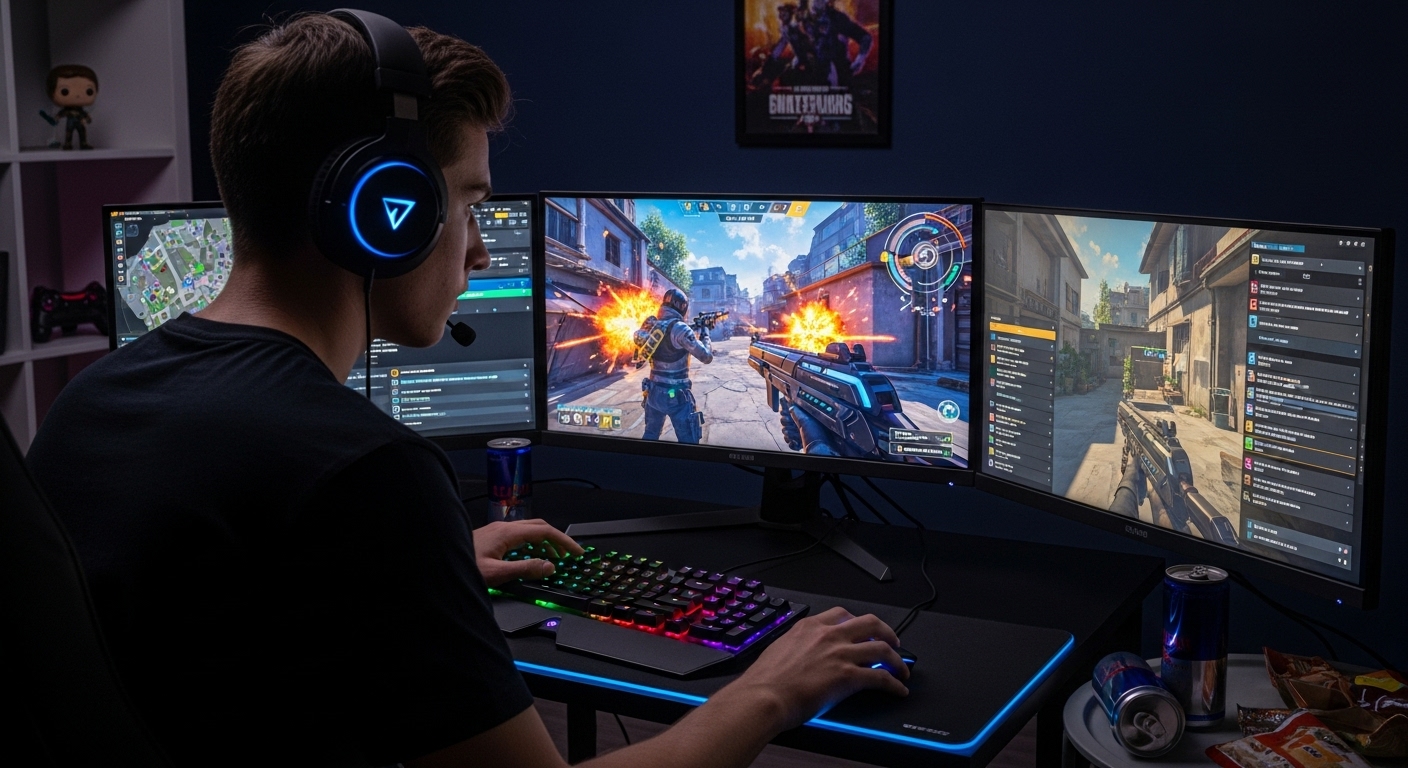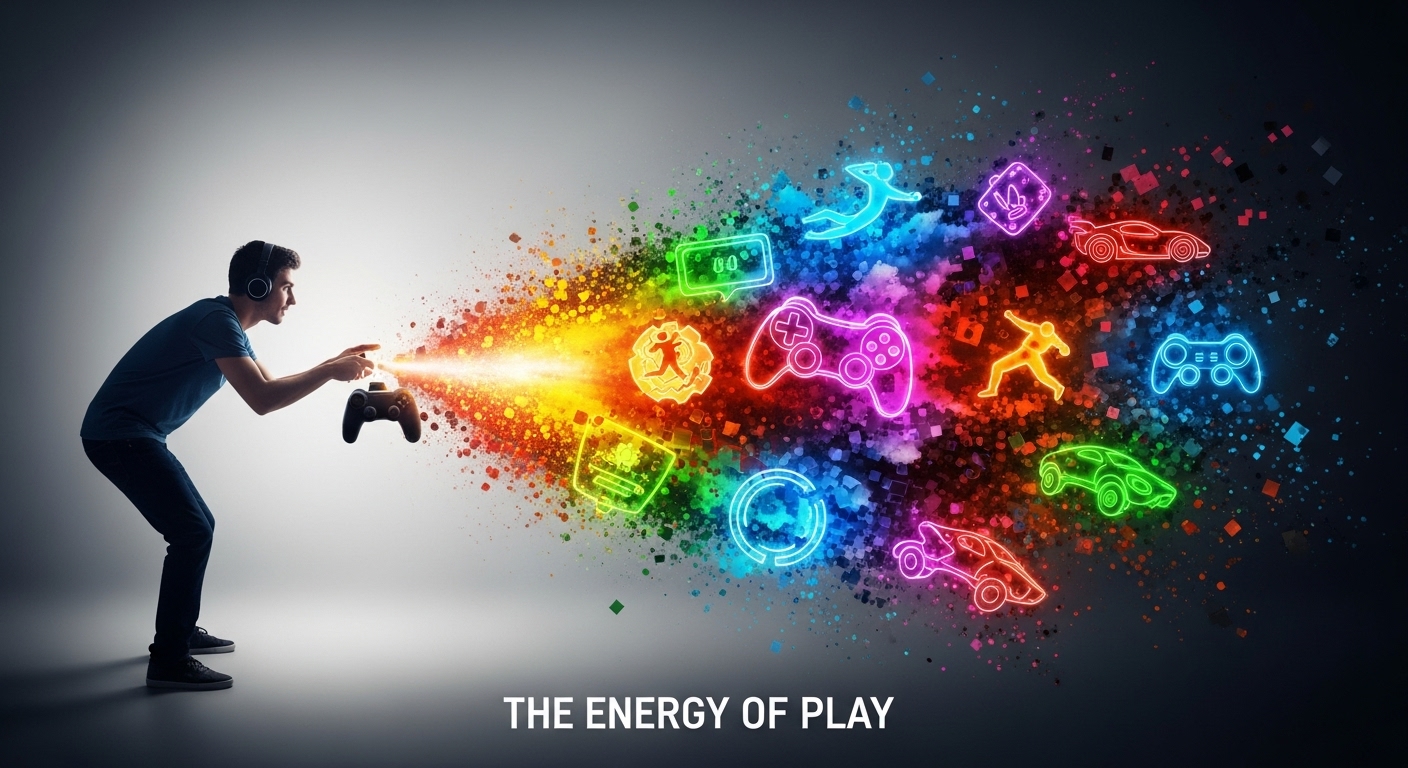Introduction
Gaming has evolved from a niche hobby to a global phenomenon that shapes culture, technology, and entertainment. What began as simple pixelated screens has now transformed into expansive virtual worlds where millions of people connect, compete, and create. The journey of gaming reflects the advancement of human creativity, the growth of technology, and the shared desire for play that has always existed in humanity. Today, gaming is not just a pastime; it’s an industry, a lifestyle, and an art form that continues to redefine itself with every passing year.
The Humble Beginnings
The roots of gaming can be traced back to the early days of computers and arcade machines. In the 1970s, games like Pong and Space Invaders captured the imagination of an entire generation. The simplicity of these games was part of their charm. A few moving lines on a black-and-white screen were enough to spark excitement and competition. The sound of coins dropping into arcade machines became synonymous with fun and leisure. These early creations laid the groundwork for the gaming industry, establishing the principles of design, challenge, and reward that continue to drive game development today.
The Rise of Home Consoles
The late 1970s and early 1980s marked a revolutionary moment in gaming history with the introduction of home consoles. The Atari 2600 brought the arcade experience into living rooms, allowing families to enjoy games together without leaving the house. Soon, other consoles followed, and the market expanded rapidly. Titles like Pac-Man and Donkey Kong became cultural icons, and characters like Mario began their legendary journeys.
This era was defined by innovation and experimentation. Developers had limited technology, yet they found creative ways to deliver entertainment that resonated with millions. The pixelated graphics, 8-bit soundtracks, and simple mechanics didn’t limit imagination; they enhanced it. Players filled in the gaps with their minds, turning those little blocks of color into living adventures.
The 16-Bit Revolution
The 1990s ushered in what many consider the golden age of gaming. With consoles like the Super Nintendo Entertainment System and Sega Genesis, gamers were introduced to more vibrant graphics, richer music, and deeper storytelling. The leap from 8-bit to 16-bit worlds opened new dimensions of creativity. Games like The Legend of Zelda: A Link to the Past, Sonic the Hedgehog, and Super Metroid showcased what could be achieved through dedication and vision.
This was also the period when gaming began to influence culture in profound ways. Characters became household names, soundtracks became memorable tunes, and gaming started to define childhood for millions. The competition between companies like Nintendo and Sega ignited what is now known as the console wars, a rivalry that pushed innovation forward at an incredible pace.
The Birth of 3D Gaming
As technology advanced, so did the ambition of developers. The mid-1990s introduced 3D graphics, changing the way players experienced games forever. Titles like Super Mario 64, Tomb Raider, and Final Fantasy VII redefined what games could be. No longer limited to side-scrolling adventures, players could now explore fully realized worlds in three dimensions.
The jump to 3D wasn’t just a technical upgrade; it was a conceptual shift. Developers now had the tools to tell stories in more immersive ways. Players could explore, interact, and experience freedom unlike ever before. This was the era when gaming truly began to resemble the cinematic art form it has become today.
The Internet and Multiplayer Revolution
The early 2000s marked another transformation — the rise of online gaming. The internet connected players across the globe, turning games from solo experiences into shared adventures. Titles like Counter-Strike, World of Warcraft, and Halo brought competitive and cooperative gameplay to millions of homes.
Online gaming fostered a new sense of community. Players formed teams, clans, and guilds, often developing friendships that extended beyond the virtual world. The idea of logging in not just to play, but to meet friends and share experiences, became a powerful part of the gaming culture. The multiplayer revolution also introduced the concept of esports, where professional players competed in front of live audiences, earning fame and fortunes that rivaled traditional athletes.
The Rise of Storytelling in Games
As gaming matured, storytelling became one of its strongest elements. Games were no longer just about winning or achieving high scores; they became emotional journeys. Titles like The Last of Us, Bioshock, and Mass Effect demonstrated that games could tell stories as profound and moving as any film or novel.
Developers began to focus on character development, moral choices, and narrative depth. Players were no longer passive participants; they were decision-makers shaping the outcome of the story. This interactivity gave gaming a unique emotional power, allowing players to connect with characters and worlds on a deeply personal level.
The Indie Game Renaissance
While big studios continued to push the boundaries of technology and storytelling, a parallel movement began to rise — the indie game revolution. Independent developers, often working alone or in small teams, started creating games that prioritized creativity and innovation over massive budgets. Titles like Minecraft, Undertale, and Hollow Knight showed that even small games could have a massive impact.
Indie games redefined what it meant to be successful in the gaming world. They often explored unconventional themes, emotional narratives, and experimental gameplay mechanics. This wave of creativity reminded everyone that gaming is an art form, not just a business. Players embraced these games for their originality and authenticity, helping to shape a more diverse and inclusive gaming landscape.
The Age of Mobile Gaming
With the rise of smartphones, gaming became more accessible than ever. Suddenly, millions of people who had never considered themselves gamers were playing on their phones during commutes, breaks, and free time. Games like Angry Birds, Candy Crush, and Clash of Clans became cultural phenomena.
Mobile gaming democratized the industry. It blurred the line between casual and hardcore players, making gaming a universal activity. The simplicity and convenience of mobile games opened the door for new audiences, including children, adults, and even seniors. This shift proved that gaming wasn’t just for enthusiasts; it was for everyone.
Virtual Reality and the Future of Immersion
The next frontier in gaming arrived with virtual reality and augmented reality. For decades, VR had been a dream — a futuristic concept portrayed in movies and science fiction. But advancements in technology made it a reality. With headsets like the Oculus Quest and PlayStation VR, players could now step directly into their games, surrounded by worlds that felt almost tangible.
Virtual reality redefined immersion. Instead of controlling a character on screen, players became the character. Every movement, every gesture became part of the experience. Meanwhile, augmented reality games like Pokémon GO brought gaming into the real world, blending the physical and digital realms in exciting ways.
These innovations showed that gaming’s evolution is far from over. As hardware improves and developers continue to experiment, the boundary between reality and virtuality will only continue to blur.
Gaming as a Social Platform
In the modern era, gaming has become more than entertainment — it’s a social platform. Games like Fortnite, Roblox, and Minecraft are not just games; they are digital worlds where people socialize, create, and share experiences. Players attend virtual concerts, celebrate birthdays, and build entire communities within these worlds.
Streaming platforms and content creation have further transformed gaming culture. Millions tune in to watch others play, not just for skill, but for personality and connection. Gamers have become influencers, entertainers, and even educators. This cultural shift highlights the social power of gaming — it connects people across languages, borders, and generations.
The Impact of Technology on Game Design
The evolution of gaming has always been closely tied to technological progress. Faster processors, advanced graphics cards, and more powerful consoles have given developers the freedom to dream bigger. Artificial intelligence has also begun to play a significant role, creating smarter enemies, adaptive storytelling, and dynamic environments that respond to player choices.
Cloud gaming is another innovation shaping the future. By streaming games directly from servers, players no longer need expensive hardware to experience top-tier titles. This makes gaming more accessible and reduces barriers for players worldwide.
As technology advances, so does the potential for creativity. Procedural generation, motion capture, and realistic physics are allowing developers to craft worlds that feel alive and ever-changing.
Representation and Diversity in Gaming
One of the most important shifts in recent years has been the growing focus on representation and inclusivity. Games now explore diverse cultures, characters, and perspectives that were once overlooked. Female protagonists, LGBTQ+ narratives, and multicultural settings have become more common, reflecting the real world in richer and more authentic ways.
This evolution has also been mirrored in the gaming community itself. The industry, once perceived as male-dominated, now celebrates players and creators of all genders and backgrounds. This inclusivity strengthens gaming by welcoming new voices, stories, and experiences that enrich the medium.
The Economics of Gaming
Gaming has grown into one of the most profitable industries in the world, surpassing even film and music combined. With billions of dollars in revenue annually, it drives not only entertainment but also technology, marketing, and social media trends.
The introduction of downloadable content, microtransactions, and live-service models has changed how games are funded and maintained. While these practices are sometimes controversial, they also allow for longer game lifespans and continuous updates. Esports tournaments fill arenas, and professional gamers earn sponsorships and salaries once unimaginable. The financial success of gaming underscores its position as a dominant cultural and economic force.
Gaming and Education
Beyond entertainment, gaming has found a valuable place in education. Educational games teach problem-solving, critical thinking, and creativity in engaging ways. Simulation games help train professionals in fields like medicine, aviation, and engineering. Schools are increasingly using gamification — the integration of game-like elements into learning — to motivate and inspire students.
Gaming encourages persistence and experimentation. It teaches players that failure is a step toward success, a lesson that translates into real-life skills. The interactive nature of games fosters collaboration, communication, and strategic thinking, making it a powerful tool for modern education.
The Emotional Power of Games
One of the most profound aspects of modern gaming is its emotional depth. Games can make players laugh, cry, and reflect. They can challenge moral choices, provoke empathy, and leave lasting impressions. Titles like Journey, Life is Strange, and Celeste demonstrate how interactive storytelling can evoke deep emotional responses.
Unlike passive media, gaming gives players agency. Their decisions matter, their paths diverge, and their actions carry consequences. This emotional engagement makes gaming one of the most powerful storytelling mediums of our time.
The Future of Gaming
Looking ahead, the future of gaming is boundless. As technology evolves, so will the ways we play. Artificial intelligence will create smarter worlds, virtual reality will become more lifelike, and cloud gaming will make high-end experiences available to anyone with an internet connection. The line between creator and player will blur even further as user-generated content and modding communities continue to thrive.
Gaming will also play a larger role in shaping culture, politics, and human connection. It will continue to push boundaries, question conventions, and expand our understanding of what art and entertainment can be.
Conclusion
The story of gaming is one of imagination, innovation, and evolution. From the simple beeps of early arcades to the breathtaking worlds of virtual reality, gaming has come a long way. It reflects human creativity at its finest — a blend of art, technology, and storytelling that continues to inspire generations.
Today, gaming is not just about playing; it’s about connecting, creating, and experiencing the extraordinary. It is a testament to how far we’ve come and a glimpse into how much further we can go. As long as there are players ready to explore and dream, the world of gaming will keep evolving — shaping not only how we play, but how we see the world itself.



